Case Report Open Access
Acrokeratosis Verruciformis of Hopf (Hopf Disease)
| Hussein Salman1* and Waiel Osman2 | ||
| 1Dermatology Clinic, Khartoum Teaching Hospital, Khartoum, Sudan | ||
| 2Registrar of dermatology, Khartoum Teaching Hospital, Khartoum, Sudan | ||
| Corresponding Author : | Hussein Salman Dermatology Clinic Khartoum Teaching Hospital Khartoum, Sudan Tel: +249123094485 E-mail: dardaka@gmail.com |
|
| Received December 12, 2013; Accepted January 25, 2014; Published January 30, 2014 | ||
| Citation: Salman H, Osman W (2014) Acrokeratosis Verruciformis of Hopf (Hopf Disease). J Infect Dis Ther 2:128. doi:10.4172/2332-0877.1000128 | ||
| Copyright: © 2014 Salman H, et al. This is an open-access article distributed under the terms of the Creative Commons Attribution License, which permits unrestricted use, distribution, and reproduction in any medium, provided the original author and source are credited. | ||
Related article at Pubmed Pubmed  Scholar Google Scholar Google |
||
Visit for more related articles at Journal of Infectious Diseases & Therapy
Abstract
Acrokeratosis verruciformis of Hopf is an autosomal dominant genodermatosis usually presenting with multiple planar wart-like lesions, typically observed on the dorsum of the hands, feet, elbows, and knees. The disease is very rare and the pathogenesis remains unknown. Considerable controversy surrounds the nature and relationship of acrokeratosis and Darier disease and whether they are manifestations of one genetic abnormality. We describe the case of a 40-year-old man seen in our clinic with skin-coloured, flat, warty papules localized to the dorsum of the hands and feet. Both clinical and histological findings were compatible with acrokeratosis verruciformis. We also review the disease, particularly its relation with Darier Disease and therapeutical options.
| Keywords | |
| Acrokeratosis verruciformis; Hopf disease; Church spire; Darier’s disease | |
| Literature Review | |
| Introduction | |
| Acrokeratosis verruciformis is a very rare, inheritable Hyperkeratotic Dermatosis that was originally described by Hopf [1]. It is characterized by multiple, localized, symmetrical, flat, skin-colored, wart-like lesions, typically observed on the dorsum of the hands and feet. | |
| Definition & clinical picture | |
| Two distinct entities have been described in the literature under this title: true ackrokeratosis verruciformis and acral Darier‘s disease (differentiation is made by histopathologically – clefts) [2,3]. Ackrokeratosis verrucifomis is a genodermatosis inherited as autosomal dominant trait disorder [1-4]. It affects both sexes and is usually present at birth or appears in early childhood. However, the onset may be delayed until the fifth decade [3,4]. Numerous flat, hyperkertotic occasionally verrucous papules are present on the distal part of the extremities, predominantly on the dorsa of the hands and feet [5]. Small groups or isolated papules may develop on the knees, elbows, forearms, and also on other parts of the body. The forehead, scalp, flexures, and the oral mucosa are never affected. | |
| Histopathology | |
| The papules show considerable hyperkeratosis, an increase in thickness of the granular layer, and acanthosis. In addition, there is frequent slight papillomatosis. There is elevation of epidermis resembling church spire appearance. The rete ridges are slightly elongated (Figure 1). | |
| Course & prognosis [1-4] | |
| • After treatment, recurrence is expected. | |
| • Transformation to S.C.C has been reported. | |
| Treatment [1,6-8] | |
| • Superficial destruction using liquid nitrogen, CO2 laser or shave excision. | |
| • Topical retinoic acid has been helpful in some individual. | |
| Summary | |
| The disease is inherited as autosomal dominant Hyperceratotic Dermatosis, was first described by Hopf [1]. Our patient was 40 years old with Lesions on hands and feet elbows and knees. Family history is negative for similar condition but parents are cousins | |
| Clinical synopsis | |
| In mid-July 2013 a middle aged (40 years) man stepped in O.P.D in KDVD hospital. The patient was anxious with a frown face. He was reluctant to shake hand & could hardly uttered (salam).He complained that he had itchy rough keratotic skin eruptions on hands, feet, elbows & knees for (1) year. The lesions are also disfiguring & embarrassing; the lesions are slow in course | |
| • Rofa’a tribe (Aljazera state) | |
| Profession: | |
| • Merchant | |
| P.H | |
| • PH of atopy, rhintis. This condition was diagnosed as eczema abroad, In the Sudan he was diagnosed as psoriasis | |
| Family history | |
| • Married (wife is a cousin), he has [3] kids who are not affected | |
| Clinical examination | |
| • There is no similar condition in his small family or grand family. | |
| • The parents of the patient are also cousins. | |
| • The lesions are distributed mostly on the dorsum of hands, feet & interdigital spaces in the form of papules, nodules having skin-color appearance with rough keratotic surface (Figure 2,3), the lesions on the knees & elbows are in the form of papules, nodules & others co-alesced to form plaques (Figure 4,5). | |
| • The scalp, hair, nails & mucous membranes are free | |
| • No specific hobbies or habits | |
| • Differential Diagnosis [1-7]. | |
| Thought of | |
| • Darier’s disease | |
| • Ackrokeratosis verrucifomis of Hopf | |
| • Common warts | |
| • Ackrokerato-elastodoidosis | |
| • Epedermodysplasia verruciformis | |
| • Reiter”s disease | |
| • Erythema elevatum diotinum | |
| • Psoriasis | |
| Histopathology (Biopsy) | |
| • Epidermal findings: - Hyperkeratosis prominent granular layer, acanthosis and church spires papillomatosis elongated rete ridges (Figure 6). | |
| • Other positive findings: High total immunoglobulin (IgE). | |
| Final diagnosis & management [1,5,9-12] | |
| • Ackrokeratosis verrucifomis of Hopf+- Atopic dermatitis (coincidence), (syndrome) | |
| Management [5,8,12] | |
| • Educational explanation to the patient of the disease nature and the outcome | |
| Treatment | |
| • Topical applications (keratolytics), e mild improvement | |
| • Systemic vitamin-A acid orally after doing required investigations. | |
| • PUVA was irritant (stopped). | |
| • The patient is to take other modalities (eg. Cryo ,laser) | |
| Conclusions & Recommendations | |
| Rare problems in dermatology but can be encountered. Dermatology is specialty of differential diagnosis. Since many diseases are not liable for radical therapy, approach should include management [11,13].Clinical examination should be thoroughly done, in a naked patient (full privacy) in a day light, or a day-lit room (keep it as personal motto) [11]. | |
References
- Hopf G (1931) Ueber eine bisher nicht beschriebene disseminierte keratose (Akrodermatosis verruciformis). Dermatol Z 60: 227-50.
- Saunders WB (1998) Andrews’ Diseases of The Skin Clinical Dermatology. J R Soc Med 76: 334-335.
- Dhitavat J, Macfarlane S, Dode L, Leslie N, Sakuntabhai A, et al. (2003) Acrokeratosis verruciformis of Hopf is caused by mutation in ATP2A2: evidence that it is allelic to Darier's disease. J Invest Dermatol 120: 229-232.
- Burns T, Breathnach S, Cox N, Griffiths C (1998) Rook’s Textbook of Dermatology (5th edition) Blackwell Scientific Publication.
- Wolff K, Johnson R (2002) Fitzpatrick Color Atlas and Synopsis of Clinical Dermatology (7th edition): McGraw Hill Professional.
- Arndt KA, Jeffery TS (2007) Manual Dermatologic Therapeutics (6th edition):Lippincott Williams & Wilkins.
- Shelley WB, Dorinda SE (1987) Advanced Dermatologic Therapy II. WB Saunders Company.
- Farro P, Zalaudek I, Ferrara G, Fulgione E, Cicale L, et al. (2004) Unusual association between acrokeratosis verruciformis of Hopf and multiple keratoacanthomas. Successful therapy with acitretin. J Dtsch Dermatol Ges 2: 440-442.
- Serarslan G, Balci DD, Homan S (2007) Acitretin treatment in acrokeratosis verruciformis of Hopf. J Dermatolog Treat 18: 123-125.
- Fitzpatrick (2011) Dermatology of Clinical Medicine Hypopigmentary Disorders. Lippincott Williams & Wilkins.
- Jackson S, Lee T, Nesbitt J (2008) Differential Diagnosis for the Dermatologist. Springer-Verlag Berlin Heidelberg.
- Lever WF, Gandula SL (1998) Histopathology of the Skin (7th edition). JB Lippincott Company.
- Bang CH, Kim HS, Park YM, Kim HO, Lee JY (2011) Non-familial Acrokeratosis Verruciformis of Hopf. Ann Dermatol 23 Suppl 1: S61-63.
Figures at a glance
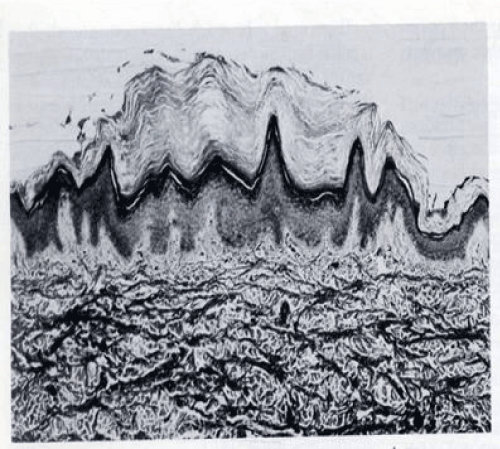 |
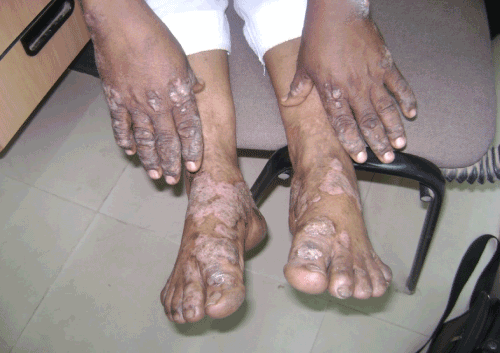 |
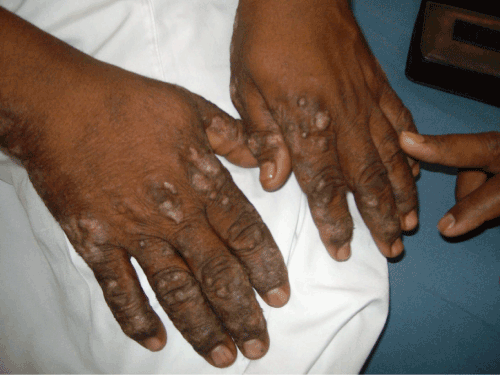 |
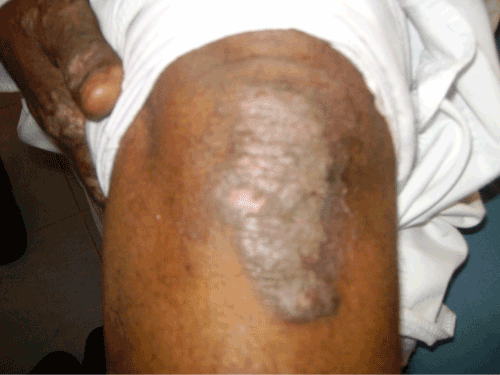 |
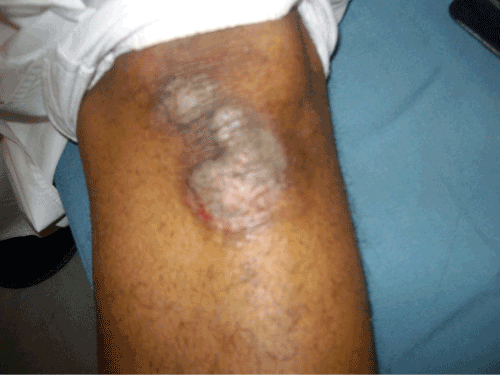 |
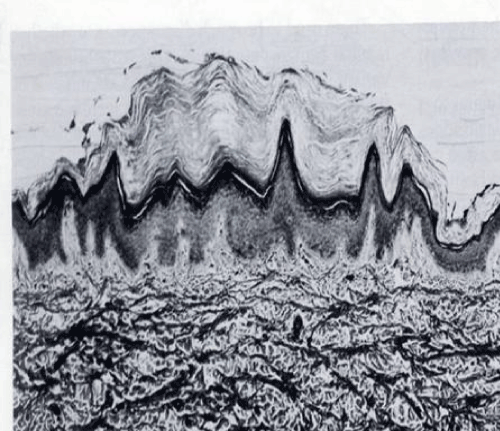 |
|||||
| Figure 1 | Figure 2 | Figure 3 | Figure 4 | Figure 5 | Figure 6 |
Relevant Topics
- Advanced Therapies
- Chicken Pox
- Ciprofloxacin
- Colon Infection
- Conjunctivitis
- Herpes Virus
- HIV and AIDS Research
- Human Papilloma Virus
- Infection
- Infection in Blood
- Infections Prevention
- Infectious Diseases in Children
- Influenza
- Liver Diseases
- Respiratory Tract Infections
- T Cell Lymphomatic Virus
- Treatment for Infectious Diseases
- Viral Encephalitis
- Yeast Infection
Recommended Journals
Article Tools
Article Usage
- Total views: 18018
- [From(publication date):
February-2014 - Apr 28, 2025] - Breakdown by view type
- HTML page views : 13342
- PDF downloads : 4676
